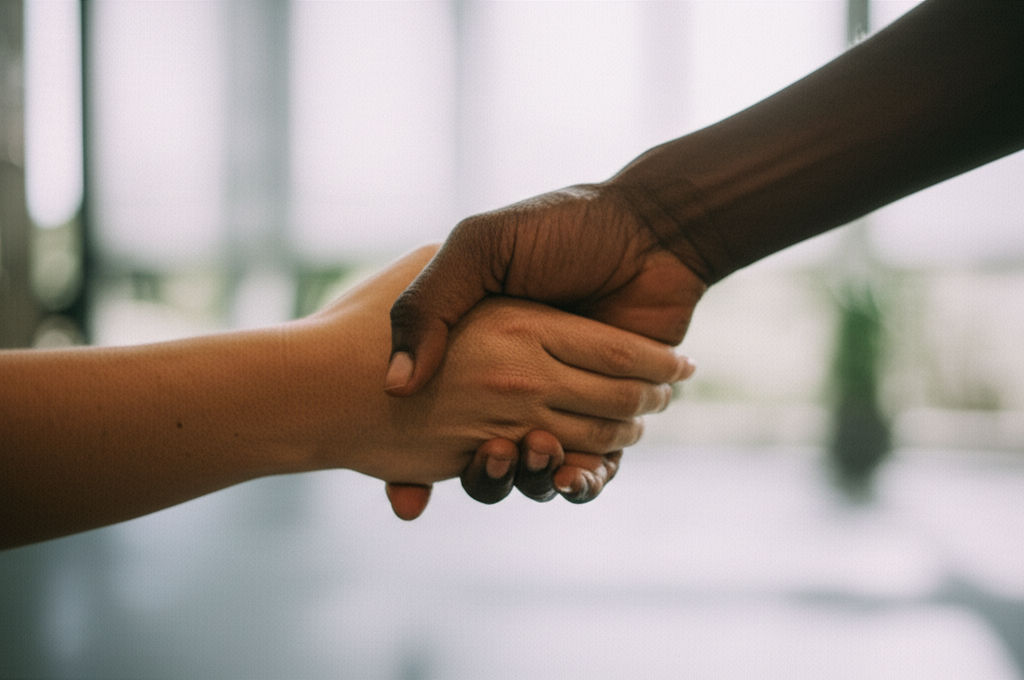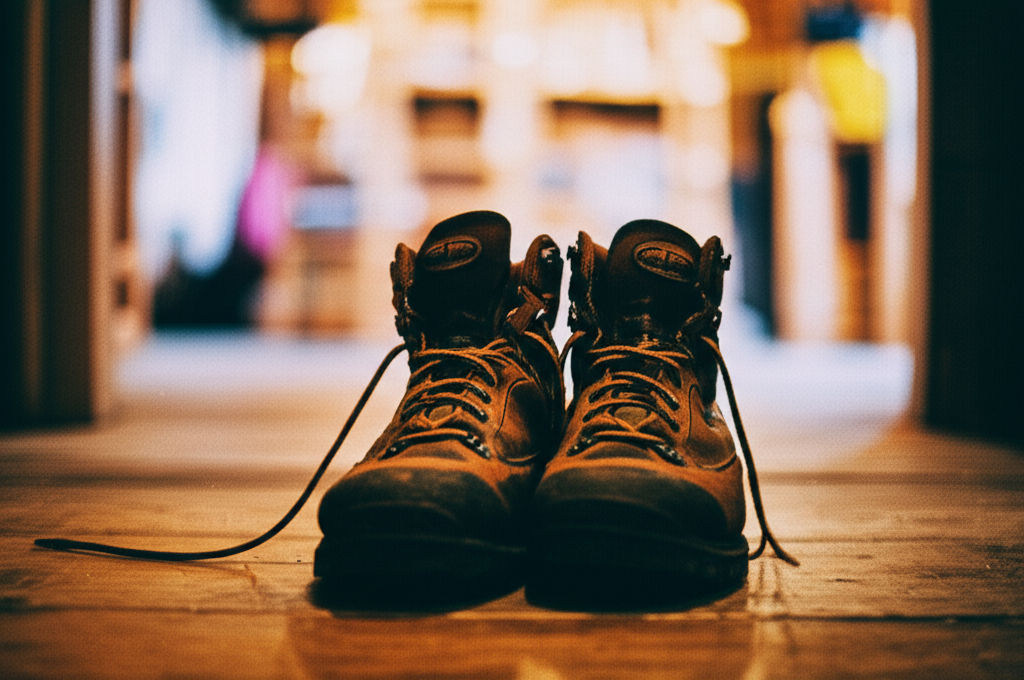Lifestyles of the Poor and Dangerous
Ikhsan Rizki

Photo: Beyond stereotypes, explore the complex realities of poverty. Understand its true dangers, systemic barriers, and the remarkable resilience found within.
Beyond Stereotypes: Exploring the Lifestyles of the Poor and the Dangers They Face
When we hear the phrase "Lifestyles of the Poor and Dangerous," what images come to mind? Often, it's a simplified, even sensationalized, picture painted by media or preconceived notions. But the reality of poverty is far more complex and nuanced than any stereotype can capture. It's not about individuals being inherently "dangerous," but rather about the dangerous circumstances, systemic barriers, and increased vulnerabilities that often accompany a lack of resources.
This article aims to peel back the layers of misconception and delve into the multifaceted challenges faced by individuals and communities experiencing poverty. We'll explore the true nature of the "dangers" involved, highlight the incredible resilience often found within these populations, and discuss how a deeper understanding can foster greater empathy and drive meaningful change.
Understanding the Realities of Poverty: More Than Just Financial Hardship
Poverty is not merely a lack of money; it's a pervasive condition that impacts every aspect of life, creating a constant struggle for basic necessities and opportunities. It's a complex issue with economic, social, political, and environmental causes.
The Economic Tightrope: Daily Struggles and Limited Resources
For those living in poverty, daily life often involves navigating an economic tightrope. Stable employment with livable wages can be elusive, leading to precarious job situations or multiple low-paying jobs that still don't cover essential expenses. This often results in:
- Food Insecurity: The inability to consistently afford healthy and nutritious food, leading to reliance on cheaper, less healthy options or skipping meals altogether.
- Housing Instability: Challenges in securing and maintaining safe, affordable housing, sometimes leading to overcrowding, substandard living conditions, or homelessness.
- Limited Access to Essential Services: Reduced access to quality healthcare, education, and even clean water and sanitation.
Systemic Barriers: Why Poverty Persists
Poverty is often perpetuated by systemic issues that create an uneven playing field. These aren't individual failures but societal challenges that limit opportunity and increase economic insecurity.
- Generational Poverty: Poverty can be passed down through generations, with a lack of opportunities and resources making it incredibly difficult to break free.
- Discriminatory Practices: Racism, gender discrimination, and other forms of social injustice can limit access to education, employment, and fair wages for certain groups.
- Inadequate Social Safety Nets: Insufficient government support and social programs can leave vulnerable populations without the critical assistance needed during times of crisis.
- Unequal Distribution of Resources: Disparities in how resources are distributed can lead to certain communities being consistently disadvantaged.
The "Dangerous" Aspect: Risks and Vulnerabilities, Not Character
When discussing the "dangerous" aspect of "Lifestyles of the Poor and Dangerous," it's crucial to shift the focus from the people themselves to the dangers they face due to their circumstances. Poverty is a significant risk factor for various negative outcomes, but it does not define a person's character or intent.
Increased Exposure to Crime and Unsafe Environments
Impoverished communities often experience higher rates of crime and violence, making residents more susceptible to victimization. This isn't because the people are inherently dangerous, but because of complex socio-economic factors:
- Higher Crime Rates: Low-income areas can have increased crime rates due to factors like lack of economic opportunity, social disorganization, and inadequate community resources.
- Unsafe Infrastructure: Impoverished communities may lack safe infrastructure, including well-maintained public spaces and adequate lighting, contributing to a sense of insecurity.
- Environmental Hazards: Residents may live in areas with higher levels of pollution or be more vulnerable to natural disasters due to more affordable housing being in risk-prone areas.
Health and Well-being Dangers
Poverty profoundly impacts health, leading to significant disparities and increased risks for chronic conditions.
- Chronic Stress and Mental Health Challenges: The constant pressure of financial instability and daily struggles can lead to chronic stress, anxiety, depression, and other mental health issues.
- Limited Access to Quality Healthcare: Affordability and accessibility barriers often prevent individuals from receiving preventive care and timely medical interventions.
- Poor Nutrition: Food insecurity and reliance on inexpensive, processed foods contribute to higher rates of malnutrition and diet-related diseases.
Educational and Future Opportunity Dangers
The cycle of poverty is often perpetuated by limited access to quality education and reduced opportunities for upward mobility.
- Underfunded Schools: Schools in low-income areas often lack adequate funding and resources, impacting the quality of education available to children.
- Reduced Social Mobility: The environment a child grows up in, including exposure to high-poverty environments, can significantly impact their future income potential.
- Lack of Safe Spaces for Youth Development: Limited access to after-school programs, recreational facilities, and safe spaces can hinder positive youth development and increase vulnerability.
Resilience and Community: Strength Amidst Adversity
Despite facing immense challenges, individuals and communities experiencing poverty often demonstrate incredible resilience, strength, and mutual support. This human spirit of perseverance is a powerful counter-narrative to negative stereotypes.
Building Stronger Bonds: The Power of Community
In the face of adversity, communities often come together, forming vital support networks.
- Mutual Aid and Informal Support: Neighbors and community members often rely on each other for assistance, sharing resources, and providing emotional support.
- Community Activism: Many low-income communities are active in advocating for their rights, demanding better resources, and organizing for social change.
- Local Initiatives: Grassroots organizations and local leaders often develop innovative solutions to address community needs, from food banks to job training programs.
Individual Strength: Coping Mechanisms and Perseverance
Individuals facing poverty often develop remarkable coping mechanisms and a strong will to overcome obstacles.
- Creativity in Problem-Solving: Resourcefulness and ingenuity are often necessary to navigate daily challenges with limited means.
- Determination to Overcome: Many individuals are driven by a strong desire to improve their circumstances for themselves and their families.
- Hope and Aspiration: Despite the difficulties, hope for a better future and aspirations for personal growth remain powerful motivators.
Challenging Misconceptions and Fostering Empathy
The phrase "Lifestyles of the Poor and Dangerous" often stems from a place of misunderstanding and harmful stereotypes. These stereotypes can lead to social exclusion, shame, and negatively impact individuals' self-esteem and mental health.
Moving Beyond Stereotypes: The Human Face of Poverty
It's crucial to recognize that people experiencing poverty are diverse, with unique stories, strengths, and aspirations. They are not a monolithic group defined by their economic status. Common stereotypes, such as the idea that people in poverty are lazy or lack motivation, are often false and contribute to harmful biases.
- Avoiding Generalizations: Each individual's experience with poverty is unique, shaped by their specific circumstances, background, and community.
- Focusing on Systemic Issues: Instead of blaming individuals, understanding that poverty is largely a structural issue rooted in economic systems and unequal distribution of resources is key.
What Can Be Done: Towards a More Equitable Future
Addressing poverty requires a multifaceted approach that goes beyond individual efforts and focuses on systemic reforms.
- Supporting Policies that Address Systemic Poverty: This includes advocating for fair wages, affordable housing, accessible healthcare, and quality education for all.
- Investing in Community-Led Solutions: Empowering and funding local initiatives that understand the unique needs of their communities can lead to more effective and sustainable change.
- Promoting Education and Awareness: Challenging stereotypes and fostering a deeper understanding of poverty's complexities is essential for building a more empathetic and just society.
Conclusion
The "Lifestyles of the Poor and Dangerous" is a phrase that, when examined closely, reveals more about societal perceptions than about the individuals it attempts to describe. It's a call to look beyond superficial judgments and recognize the profound challenges and dangers that poverty itself creates. More importantly, it's an invitation to acknowledge the immense strength, resilience, and humanity that persist even in the most difficult circumstances.
By understanding the systemic roots of poverty, challenging harmful stereotypes, and supporting comprehensive solutions, we can move towards a future where everyone has the opportunity to thrive, free from the dangers and limitations imposed by a lack of resources.
What are your thoughts on challenging stereotypes related to poverty? How can we better support communities facing these challenges? Share your insights in the comments below!
Frequently Asked Questions (FAQ)
Q1: Is "Lifestyles of the Poor and Dangerous" an accurate description?
No, the phrase "Lifestyles of the Poor and Dangerous" is largely inaccurate and perpetuates harmful stereotypes. While individuals living in poverty often face increased dangers due to their circumstances (such as higher crime rates in their neighborhoods or limited access to resources), the phrase incorrectly implies that the people themselves are inherently dangerous or that their "lifestyle" is a choice leading to danger. Poverty is a complex issue driven by systemic factors, not a personal failing or a chosen "dangerous lifestyle."
Q2: What are the biggest dangers faced by those living in poverty?
The biggest dangers faced by those living in poverty are primarily systemic and environmental, not inherent to the individuals. These include: increased exposure to crime and violence, health disparities due to limited access to healthcare and nutritious food, chronic stress, housing instability, and reduced educational and employment opportunities. These factors create a cycle of vulnerability and hardship.
Q3: How can communities break the cycle of poverty?
Breaking the cycle of poverty requires a multifaceted approach focusing on systemic change and community empowerment. Key strategies include: improving access to quality education and job training, ensuring livable wages, providing affordable housing and healthcare, strengthening social safety nets, and addressing discriminatory practices. Community-led initiatives and policies that promote equitable distribution of resources are also crucial.
Q4: What role do stereotypes play in understanding poverty?
Stereotypes about poverty, such as believing that people in poverty are lazy or unmotivated, significantly hinder a proper understanding of the issue. These misconceptions often lead to social exclusion, shame, and discrimination against individuals experiencing poverty. They distract from the real, systemic causes of poverty and can undermine efforts to implement effective solutions, as they shift blame from societal structures to individual character.
Business
View All
November 19, 2025
Why Deloitte Is Laying Off ConsultantsUnderstand why Deloitte is laying off consultants. Economic headwinds, post-pandemic overhiring, and shifting client needs are key factors.
Ikhsan Rizki

August 11, 2025
Review of HON Office FurnitureChoosing office furniture? Our HON review covers reliability, affordability, and who it's best for, helping you pick the right fit for your workspace.
Ikhsan Rizki

August 31, 2025
Best Ways to Find Costco Coupons in 2025Unlock maximum Costco savings in 2025! Discover how to find Instant Savings, use the app, and get email deals for ultimate discounts.
Ikhsan Rizki

November 5, 2025
Virginia Business Search Made EasyUnlock Virginia business info effortlessly! Our guide simplifies SCC searches for name availability, due diligence, and company details. Get reliable results.
Ikhsan Rizki

August 14, 2025
Business Lessons from Busy SpiderUnravel the secrets of success! Discover how a spider's strategic web design, persistence, and efficiency can transform your business.
Ikhsan Rizki

September 10, 2025
How to Style a Risky Business OutfitElevate your office style! Master the "risky business outfit," balancing professionalism with a confident, fashion-forward edge.
Ikhsan Rizki
Economy
View AllUnpack "full employment" beyond zero unemployment. Discover its true meaning, impact on the economy, and how it shapes policy. Master key economic concepts.
Ikhsan Rizki
Decatur, GA on a budget? Learn strategies to find an affordable, quality hotel stay. Enjoy your trip without sacrificing comfort or location!
Ikhsan Rizki
Find comfortable, clean, and affordable economy lodges for your next trip. Our guide helps you discover budget-friendly stays near you!
Ikhsan Rizki
Unlock motivation with the power of token economies! Learn the psychology behind this system to drive positive behavior and achieve goals.
Ikhsan Rizki
Upgrade your long-haul flight! Discover ITA Airways Premium Economy: enhanced comfort, more space, and amenities without the business class price tag. Is it for...
Ikhsan Rizki
Is Singapore Airlines Economy a cut above? Uncover its premium comfort, world-class entertainment, and renowned service in this guide.
Ikhsan Rizki
Education
View AllMaster "Physical Education" in Spanish! This guide covers "Educación Física," "EF," and regional variations like "Gimnasia." Speak confidently!
Read MoreDiscover special education teacher salaries! Learn national averages, key influencing factors, and strategies to boost your income in this rewarding career.
Read MoreUncover the UGA Marine Center in Savannah, GA. Dive into groundbreaking marine research, education, and conservation protecting Georgia's coast.
Read MoreEmpower your child's special education journey. An IEE offers an unbiased second opinion to ensure their needs are truly met.
Read MoreShape the future of education! Explore Director of Education jobs, key responsibilities, and career paths for experienced leaders.
Read MoreUnpack why Democratic AGs are suing the Education Dept. Learn the key issues, from student loans to policy, and their impact on American education.
Read MoreHealth
View All
September 24, 2025
Pueblo Community Health ServicesDiscover Pueblo Community Health Services (PCHS): accessible, comprehensive medical, dental, & behavioral health for all in Pueblo. Your guide to quality care.
Ikhsan Rizki

August 24, 2025
LifeStance Health Reviews TodayConsidering LifeStance Health? Get real patient insights. Explore services, reviews, and tips to decide if this mental health platform is right for you.
Ikhsan Rizki

November 6, 2025
Ponce Health Sciences University InfoPonce Health Sciences University (PHSU): A distinguished choice for health education, offering diverse programs, cutting-edge research & community focus.
Ikhsan Rizki

November 29, 2025
San Jose Behavioral ServicesSan Jose behavioral services: Your guide to mental wellness in Silicon Valley. Find local support & thrive amidst life's pressures.
Ikhsan Rizki

October 26, 2025
Follow My Health Northwell Login TipsGet seamless access to your Follow My Health Northwell patient portal. Our guide offers tips to resolve login issues and manage your health records with ease.
Ikhsan Rizki

August 24, 2025
Top 25 Health Science Jobs for 2025Unlock your future! Discover the top 25 in-demand health science jobs for 2025. Find a fulfilling and stable career in healthcare.
Ikhsan Rizki
Popular Articles
View All
1
2
3
4
5
6
7
8
9
10
Lifestyle
View All
November 2, 2025
What is HM Lifestyle on your credit card
Mysterious "HM Lifestyle" charge on your card? Unravel what it means, from H&M purchases to potential fraud, and how to investigate.

September 18, 2025
Life With a Five Million Dollar Net Worth
Ever wonder what life with $5M net worth is *really* like? Uncover the true realities, responsibilities, and financial freedom beyond the luxury.

November 24, 2025
Inside Red Monkey Lifestyle Brand
Red Monkey Lifestyle Brand: Authentic rock & roll style handcrafted in America. Unique, vintage-inspired accessories for those who stand out.

October 1, 2025
The Passage Hotel Is a Must Stay
The Passage Hotel Basel: Your must-stay destination for luxury, comfort, and an unbeatable city center location. Unforgettable travel awaits!

August 13, 2025
Manchester Adult Lifestyle Overview
Unlock your best life in Manchester! This guide covers top neighborhoods, career insights, leisure, and community to help you thrive in this vibrant city.

October 8, 2025
Bose Model 5 Music System
Explore the Bose Model 5 Music System. Get immersive, room-filling sound from a sleek, compact home audio solution. Rediscover your music!

November 8, 2025
Inside the world of Lifestyle Inc
Explore "Lifestyle Inc," the vast ecosystem shaping modern life. Understand its influence, make mindful choices, and take control of your well-being.

November 18, 2025
Are Lifestyles Prices Worth It
Are your lifestyle choices worth the cost? Decode "lifestyle prices" to ensure you're getting true value from your spending.
Sports





Travel
View All
October 31, 2025
Tex Best Travel Center Roadside Stop
Find the perfect pit stop in Texas! Tex Best Travel Center offers clean restrooms, diverse fuel, and food to redefine your road trip experience.

October 4, 2025
EOS Vanilla Cashmere Hand Cream Travel Size
Banish dry travel hands! Get soft, hydrated skin on the go with EOS Vanilla Cashmere Hand Cream Travel Size. Your compact hydration secret.

September 27, 2025
Prayer for Safe Travel
Find peace and protection for your journey. Discover how a powerful prayer for safe travel can reduce anxiety and bring divine peace of mind.

August 5, 2025
Direct Line travel insurance
Direct Line travel insurance: No new policies. Existing customer? This guide helps you manage your policy, understand coverage, & navigate claims.

October 4, 2025
Fellow Travelers Book on Love and Politics
Discover Thomas Mallon's "Fellow Travelers," a poignant novel masterfully intertwining forbidden love with McCarthy-era political paranoia.

November 7, 2025
Lululemon Travel Bag for Active Lifestyles
Elevate your active travel! Find the ultimate Lululemon bag for seamless organization, durability, and style on all your adventures.

















